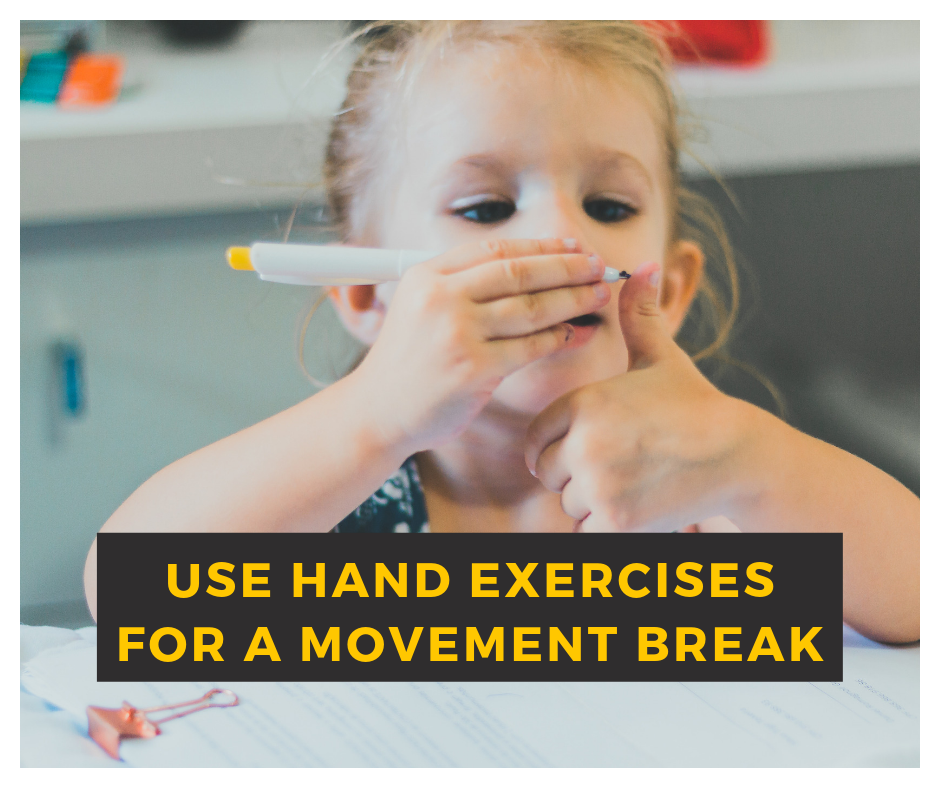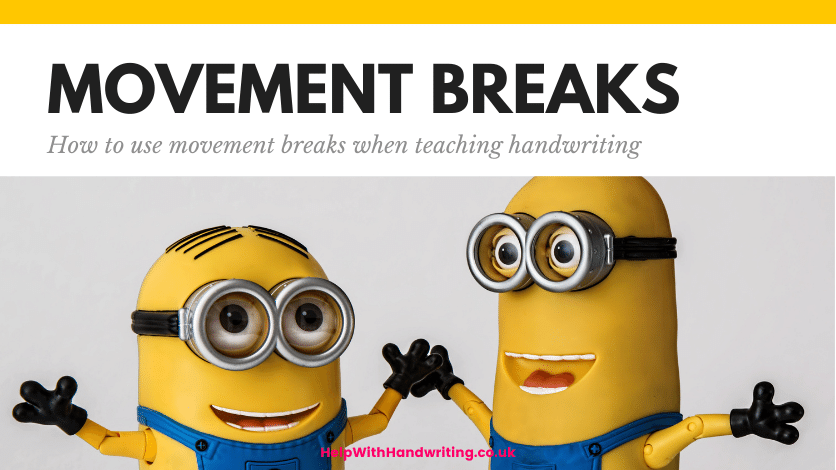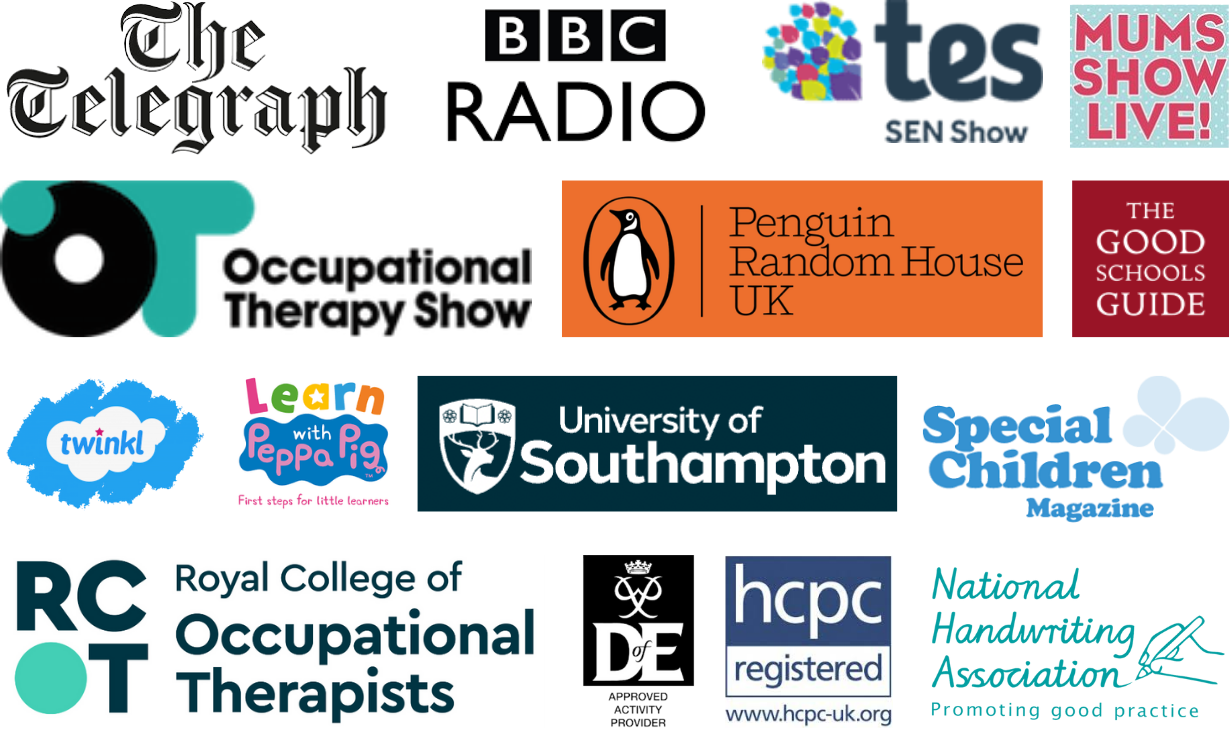Movement breaks is a term used within the classroom to give a physical activity break to a child.
The aim is to help them to learn more by refreshing their mind and body.
They can also be called brain breaks or sensory breaks and are very easy to incorporate into a handwriting lesson.
Today I wanted to share with you how I use movement breaks when teaching handwriting.
What are they?
Although the term ‘movement breaks’ is an easy term to understand. I find it simpler to think that a child needs to have a ‘sensory break’ when learning.
Sensory breaks are activities that involve our senses. They incorporate our senses of sight, smell, taste, hearing, touch and of course movement. The reason why we need them is that when we sit for long periods of time it reduces blood flow around the body. It can reduce as much as by 40% and thus affect our ability to learn new ideas.
How do you know when a child needs them?
- Is your child under or over reacting to the things you are saying, instructions, or transitions?
- Are they constantly moving about and are seeking sensory movement?
What can you do?
I find it helpful to use this guide:
- Movement activities are for children that need calming and re-focusing.
- Calming activities are for children who are sensory seekers.
- For students who over react to sensory information use movement activities.
With a lesson setting it is more difficult to use brain break activities that involve smell and taste. Activities that use these senses will often help children re-focus.

Research tells us that having a drink of water or even a lemon cordial drink that has a bitter taste can we reinvigorate the brain.
Having a biscuit or a piece of fruit in the middle of a handwriting lesson would be classed as having a ‘taste’ break. This is easier to do at home than at school. It is a good technique to break up the time spent completing homework.
When we think of sense of hearing, a brain break could be listening to music, or even dancing to music. This is a good movement based activity.
I personally would be asking a child to be listening to only one to two songs. Otherwise it turns more into a dance lesson than a handwriting lesson. The way that I have used music is that I play music as background noise for when we have been completing core body strength exercises. This helps develop sitting posture skills. Choosing the music is down to the kids. It does not have to be classical and is often what is in the charts. You Tube’s current playlist is always very helpful.
Another movement break would be completing hand exercises and this involves the sense called touch. They are often very good calming activities.

Hand exercises would be used to relieve muscle tension caused when holding the pencil too tightly.
Alternatively, asking a child to go and get something from another part of the room is a movement break. The ‘breaks’ do not have to be complicated. The aim is to keep the brain energised and refreshed ready to learn by letting the blood flow back around the body.
How often do I use them?
This depends on the child and their age. Without really thinking about it I will change activities regularly. This is to keep engaging the mind and let it be ready to learn. Sometimes just changing an activity from something easy to more difficult to back to being something easy again is enough to give both the mind and the body a break.
An example of how I do this is to do a fine motor hand game, followed by a writing worksheet and ending with hand stretches.
Alternatively, it could be five minutes completing a handwriting puzzle game, 10 minutes writing a book review followed by a 5-minute WebQuest using the internet to search for an answer to a question.









